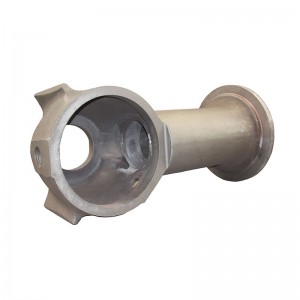Set . 29, 2024 09:27 Back to list
Exploring the Art and Techniques of Die Casting in Modern Manufacturing
The Art of Die Casting Transforming Metal into Masterpieces
Die casting is a manufacturing process that has revolutionized the production of metal parts across various industries. This technique involves forcing molten metal into a mold cavity under high pressure, which allows for the creation of complex shapes with precision and consistency. As technology has advanced, die casting has become an essential method for producing everything from automotive components to intricate consumer products.
One of the primary materials used in die casting is aluminum, chosen for its lightweight properties and resistance to corrosion. Zinc and magnesium are also commonly used due to their favorable mechanical properties and cost-effectiveness. The choice of material often depends on the desired characteristics of the final product, such as strength, weight, and thermal conductivity.
The Process of Die Casting
The die casting process can be broken down into several key steps. First, the die, or mold, is designed and machined to create the desired shape of the metal part. This die is typically made from steel or other sturdy materials that can withstand the high pressures and temperatures involved in casting.
Once the mold is ready, the metal is heated until it reaches a molten state. This molten metal is then injected into the die at high speed, filling the cavity to form the shape of the part. The pressure used during injection can reach up to 20,000 psi, enabling the production of intricate details and smooth surfaces.
After the metal has cooled and solidified, the die opens to remove the newly cast part. This is often assisted by ejector pins that push the part out without damaging it. The entire process is highly efficient, allowing for rapid production rates and minimal waste.
Advantages of Die Casting
die casted

Die casting offers numerous advantages compared to other manufacturing methods. One of the most significant benefits is the ability to produce complex shapes with high precision. This precision reduces the need for extensive machining or finishing, which can save time and costs in the production process.
Additionally, die casting is ideal for high-volume production. The durability of the dies used in this process allows for thousands of parts to be produced with consistent quality. This high repeatability makes die casting particularly appealing to industries that require large quantities of identical parts, such as automotive and electronics manufacturing.
The surface finish achieved through die casting is another advantage. Parts produced through this method often have a smooth surface and can even be aesthetically pleasing without the need for additional treatments. This characteristic is particularly important for consumer products, where appearance can significantly impact consumer choice.
Applications and Innovations
The applications of die casting are vast, ranging from automotive components like engine blocks and transmission housings to hardware products and electrical enclosures. The process has also seen innovations with the advent of new materials and technologies. For instance, advancements in 3D printing and computer-aided design are starting to influence the design and production of the molds used in die casting, leading to greater flexibility and creativity in manufacturing.
Moreover, the push for sustainability in manufacturing has led to the development of environmentally friendly practices within the die casting industry. Many companies are implementing recycling programs for metal scrap and exploring methods to reduce energy consumption during the casting process.
Conclusion
In conclusion, die casting is an integral part of modern manufacturing, known for its efficiency, precision, and versatility. As industries continue to evolve and demand more complex parts at a lower cost, die casting will undoubtedly remain a key player in the production landscape. With ongoing innovations and a focus on sustainability, the future of die casting looks promising, paving the way for the creation of new and exciting products. As this manufacturing process continues to advance, it holds the potential to redefine how we think about metal production and design in the years to come.
-
Durable Centrifugally Cast Iron Water Main Pipe
NewsAug.11,2025
-
Centrifugally Cast Iron Water Main Pipes for Reliability
NewsAug.10,2025
-
High-Quality Centrifugally Cast Iron Water Main Pipes
NewsAug.09,2025
-
Durable Cast Iron Water Main Pipe & Drainage Solutions
NewsAug.08,2025
-
Buy Cast Iron Pipe: Premium Ductile Iron & Drain Solutions
NewsAug.07,2025
-
Durable Cast Iron Water Main Pipe | Buy Ductile Pipe
NewsAug.06,2025


